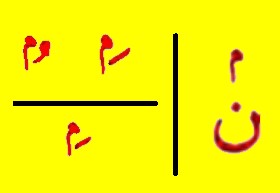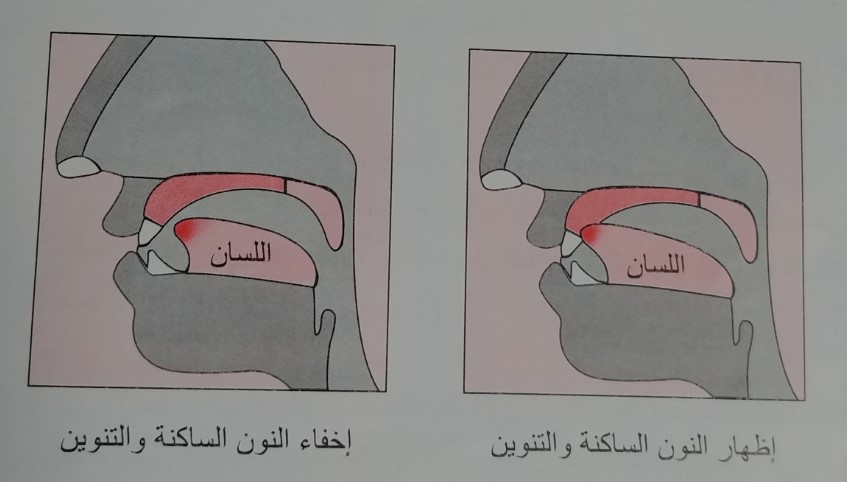Lesson 4 | The Rules of At-Tanween
At-Tanween - It is the ن with sukun sound at the end of nouns. It is pronounced but not written. It follows the same rulings as a normal ن with sukun but it is represented as Tanween in the Mushaf.
 This is what it looks like when the ن ruling is الإظهار - Clear Enunciation.
This is what it looks like when the ن ruling is الإظهار - Clear Enunciation.
 This is what it looks like when the ن ruling is الإقلاب - Changing/Converting.
This is what it looks like when the ن ruling is الإقلاب - Changing/Converting.
 This is what it looks like when the ن ruling is الإدغام - Merging.
This is what it looks like when the ن ruling is الإدغام - Merging.
 This is what it looks like when the ن ruling is الإخفاء - Hiding.
This is what it looks like when the ن ruling is الإخفاء - Hiding.
 The image on the right shows when you pronounce ن clearly. The tongue will be put on the point of articulation of ن. The image on the left shows when it is hidden. The tongue will not be placed on the point of articulation of ن but the nasal sound (ghunnah) will be retained.
The image on the right shows when you pronounce ن clearly. The tongue will be put on the point of articulation of ن. The image on the left shows when it is hidden. The tongue will not be placed on the point of articulation of ن but the nasal sound (ghunnah) will be retained.
Summary of Lesson Three and Lesson Four
This is a summary of the rules of ن with sukun as they appear in the Mushaf.
Based on the rulings, one or both of the parts of pronouncing ن with sukun or tanween in recitation are broken down as follows:
1. Clear Enunciation - You hear the clear pronunciation of the ن but not the ghunnah.
2. Changing - You hear the م and its ghunnah lightly.
3. Merging - There are two Types.
a. Complete Merging - You don’t hear the ن or its ghunnah.
b. Incomplete Merging - You don’t hear the ن but you hear the ghunnah.
4. Hiding - You hear the ن and its ghunnah lightly.